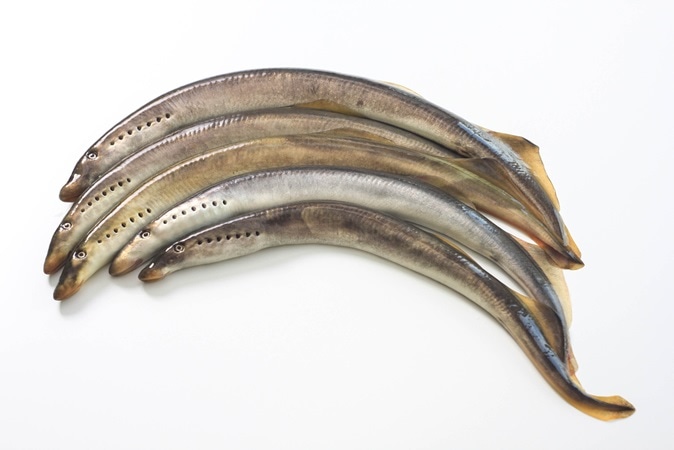Researchers have found that several genes within an ancient species of fish can be used to provide clues in the treatment of spinal cord damage. The study titled, “Highly Conserved Molecular Pathways, Including Wnt Signaling, Promote Functional Recovery from Spinal Cord Injury in Lampreys,” appeared in the latest issue of the journal Scientific Reports.

River lamprey. Image Credit: Krot44 / Shutterstock
The American researchers have noted that several of these ancient genes are involved in the peripheral nervous system of mammals. The study was led by researchers at the Marine Biological Laboratory (MBL) of the Eugene Bell Center for Regenerative Biology and Tissue Engineering, and the Feinstein Institute for Medical Research. The team obtained protein making profiles in the genetic coding of the lamprey fish spinal cords and brains after they created a spinal cord injury (SCI). They used a sequencer called the RNA-Seq to check the changes that occurred in the genes after the injury in the fish.
Jennifer Morgan, Ph.D., director of the MBL's Eugene Bell Center for Regenerative Biology and Tissue Engineering and co-author of the study explained that several genes that were found in the fish to change the transcription profiles were found to be overlapping with the mammalian genes. These genes help in the regeneration of the mammalian peripheral nervous system.
Most mammals can only regenerate their peripheral nervous systems after injury. Some of the fish such as lampreys and other animals such as reptiles and amphibians are capable of spontaneously regenerate following spinal cord injury say researchers. Lampreys especially are adept at regenerating even a completely severed spinal cord and resume swimming without any treatment. Morgan explains that they can go to complete swimming from complete paralysis ina period of 10 to 12 weeks. Humans have diverged from these jawless eel like fish from their ancestors around 550 million years back say the authors.
Ona Bloom, Ph.D., at the Feinstein Institute for Medical Research and the Zucker School of Medicine at Hofstra/Northwell said that the scientific world was aware of the regeneration capacity of the lampreys but was not aware of how they were doing it. The molecular level mechanism was not clear. These genes have now been found to exist in the mammals too. Some of these include those for, “axon guidance and regeneration, synaptic transmission, neural patterning and neurodegeneration.” The authors find that the lamprey central nervous system us analogous to humans and other vertebrates that have jaws unlike the lampreys.
For this study the team obsevered the genetic workings of the lampreys after their spinal cords were severed. They took their observations at several points including ones within hours after injury, until the fish had completely recovered at the end of 3 months. They noted that genes changed with the time as the regeneration progressed to completion. The changes in the transcription genes were also seen in the brains they noted. “One of the most surprising findings from this study is the robust and complex transcriptional responses occurring in the lamprey brain after SCI,” authors write. In fact at the time of recovery, they noted 238 newly formed and expressed transcripts in the spinal cord and 88 new transcripts in the brain. Morgan explains that this shows that the brain and spinal cord changes during regeneration process significantly.
The team also found that 3 percent of these new transcripts were from the Wnt pathways. These belong to the “Wnt and Frizzled gene families,” the researchers add. These 19 mammalian Wnt genes are seen commonly among many animal species they say. These pathways have been shown to play a role in spinal injury. Zebrafish and salamanders have been shown to use this pathway for regeneration in previous experiments. Morgan said that when they stopped these Wnt signaling pathway using certain drugs, the lampreys could not recover from their spinal injury and could not swim again. The reason why this pathway works how it does is what the team is studying now.